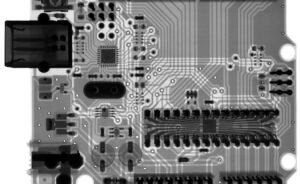Computer Language Generations
Introduction
Computer languages have evolved over time into different generations, each with its own characteristics and advancements.
Understanding these generations can provide insights into the development and progress of programming languages.
Key Takeaways:
- Computer languages have evolved into different generations, each with unique characteristics.
- Understanding the generations can provide insights into the development and progress of programming languages.
The First Generation: Machine Language
The first generation of computer languages is known as machine language, which consists of low-level instructions directly understandable by the computer’s hardware.
These instructions are typically represented by combinations of 0s and 1s, making it challenging for humans to read and write.
Machine language allows precise control over the computer’s hardware but lacks portability across different machines.
*Machine language is the most basic form of programming, directly communicating with the computer’s hardware.*
The Second Generation: Assembly Language
The second generation of computer languages is assembly language, which uses mnemonic codes to represent machine instructions.
These mnemonics make it easier for programmers to read, write, and understand the instructions.
Assembly language is specific to a particular computer architecture and still requires a deep understanding of the underlying hardware.
*Assembly language provides a human-readable representation of machine code instructions, improving programmer productivity.*
The Third Generation: High-Level Languages
The third generation of computer languages introduces high-level languages, enabling programmers to write instructions using more abstract and human-readable statements.
Examples include Fortran, Algol, and COBOL.
High-level languages are portable across different computer systems and provide built-in functions and libraries for common tasks.
*High-level languages revolutionized programming by simplifying coding through human-friendly keywords and syntax.*
Three Generations of Computer Languages
| Generation | Characteristics |
|---|---|
| First | Low-level, machine-specific instructions represented in binary code. |
| Second | Mnemonic codes representing machine instructions for a particular computer architecture. |
| Third | High-level, portable languages with human-readable syntax and built-in libraries. |
The Fourth Generation: Domain Specific Languages (DSL)
The fourth generation of computer languages comprises domain-specific languages (DSL), designed for specific application domains or industries.
These languages provide a higher level of abstraction, focusing on specific problem areas and offering specialized syntax and libraries.
DSLs improve development efficiency in their respective domains by providing targeted functionality and reducing code complexity.
*Domain-specific languages offer tailored solutions for specific industries, enhancing development productivity and code quality.*
The Fifth Generation: AI-Based Languages
The fifth generation of computer languages aims to develop AI-based languages that can understand and learn from human language.
These languages focus on natural language processing, reasoning, and machine learning capabilities.
The goal is to enable programmers to communicate with computers more intuitively and efficiently, ultimately enhancing AI development.
*AI-based languages revolutionize human-computer interaction by enabling programmers to communicate using natural language.*
Generations of Computer Languages
| Generation | Characteristics |
|---|---|
| First | Low-level, machine-specific instructions represented in binary code. |
| Second | Mnemonic codes representing machine instructions for a particular computer architecture. |
| Third | High-level, portable languages with human-readable syntax and built-in libraries. |
| Fourth | Domain-specific languages designed for specific application domains or industries. |
| Fifth | AI-based languages with natural language processing and machine learning capabilities. |
Conclusion
Computer language generations have evolved from machine language to AI-based languages, each offering increased abstraction, ease of use, and specialized functionality.
Understanding these generations provides valuable insights into the historical development and progress of programming languages.

Common Misconceptions
First Generation Computers
One common misconception is that first-generation computers used a high-level programming language. In reality, first-generation computers were built using vacuum tubes and used machine language, which consists of binary instructions.
- First-generation computers relied on vacuum tubes for processing.
- Machine language, composed of binary instructions, was used.
- High-level programming languages did not exist during this period.
Second Generation Computers
Another misconception is that second-generation computers were programmed using assembly language. However, assembly language was actually introduced during the first generation. Second-generation computers relied on transistors for processing, which resulted in improved speed and efficiency.
- Assembly language was introduced during the first generation.
- Second-generation computers used transistors instead of vacuum tubes.
- Transistors improved the speed and efficiency of processing.
Third Generation Computers
Many people believe that third-generation computers introduced high-level programming languages, which is partially true. While high-level programming languages were indeed developed during this era, they were first introduced in the second generation. Third-generation computers, however, saw advancements in integrated circuits.
- High-level programming languages were first introduced in second-generation computers.
- Third-generation computers made advancements in integrated circuits.
- Integrated circuits led to smaller and more reliable computers.
Fourth Generation Computers
A common misconception is that fourth-generation computers marked the introduction of personal computers (PCs). However, fourth-generation computers actually involved advancements in microprocessors and the development of larger-scale integrated circuits.
- Fourth-generation computers saw advancements in microprocessors.
- Larger-scale integrated circuits were developed during this period.
- The introduction of personal computers (PCs) occurred in the fifth generation.
Fifth Generation Computers
Lastly, fifth-generation computers are often misunderstood to be solely focused on artificial intelligence (AI). While AI was indeed a significant aspect, fifth-generation computers also involved advancements in parallel processing, supercomputers, and human-computer interaction.
- Fifth-generation computers focused on artificial intelligence (AI).
- Advancements in parallel processing and supercomputers were prominent.
- Human-computer interaction was a key aspect of fifth-generation computers.

Overview of Computer Language Generations
Computer languages have evolved over time, going through several generations that bring new features and capabilities. Each generation builds upon the advancements of the previous one, leading to more efficient and powerful programming. This article explores the four main generations of computer languages and highlights their distinguishing characteristics.
First Generation: Machine Language
The first generation of computer languages, known as machine language, directly corresponds to the machine code that computers understand. It consists of binary instructions that are specific to a particular computer architecture. As a result, programmers had to write code in low-level instructions, making it challenging and time-consuming to develop programs.
Second Generation: Assembly Language
Assembly language, the second generation of computer languages, introduced mnemonic codes and symbols to replace the binary instructions of machine language. This abstraction made programming slightly easier, as it allowed programmers to use textual representations of instructions instead of writing raw binary code.
Third Generation: High-Level Language
The third generation of computer languages, high-level languages, brought significant advancements in programming. Here, programmers utilize instructions that resemble natural human language, making it easier to write, read, and maintain code. Examples of such languages include C, Java, and Python, which provide rich libraries and extensive functionalities.
Fourth Generation: Domain-Specific Language
Domain-specific languages (DSLs) are the fourth generation of computer languages, designed to address specific application domains. These languages focus on providing high-level abstractions and simplify programming tasks within particular areas, such as database management, web development, or mathematical modeling. DSLs enhance productivity by offering specialized tools and features tailored to specific industries.
Evolution of Syntax
The syntax of computer languages has evolved significantly across generations. Early languages, like machine and assembly language, had rigid and complex syntax due to their low-level nature. However, as languages advanced, syntax became more structured, intuitive, and flexible. High-level languages introduced language constructs that assisted in program organization, readability, and modularity.
Portability and Compatibility
With each generation, computer languages have strived for increased portability and compatibility. Early generations were tightly coupled to specific hardware architectures and had limited cross-platform capabilities. However, as languages progressed, efforts were made to ensure code written in one language could run on various systems with minimal modifications.
Productivity and Efficiency
Advancements in computer languages have aimed to improve programmer productivity and code efficiency. High-level languages provided abstractions and automated functionalities, reducing the time and effort required to write code. Additionally, compilers and interpreters became more optimized, allowing programs written in these languages to execute faster and consume fewer resources.
Parallelism and Concurrency
Modern computer languages address the need for parallelism and concurrency, allowing for efficient utilization of modern hardware capabilities. They provide constructs for concurrent execution, parallel processing, and shared memory management. These features enable developers to write programs that effectively utilize multi-core processors and distributed computing systems.
Support for Oriented Programming Paradigms
The evolution of computer languages has witnessed increasing support for various programming paradigms. As languages progressed, they embraced object-oriented programming, functional programming, logic programming, and other paradigms. This flexibility allows developers to choose the most appropriate language and paradigm for their application’s requirements and design.
Integration with Other Technologies
Modern computer languages seamlessly integrate with other technologies and frameworks, enhancing application development. They provide comprehensive support for web development, database interaction, networking, and much more. These integrations facilitate the building of robust, interconnected systems that cater to the increasingly complex demands of today’s software.
Conclusion
The evolution of computer language generations has revolutionized programming, making it more accessible, efficient, and powerful. From the low-level complexities of machine and assembly languages to the abstraction and productivity of high-level languages, computer languages have continuously adapted to meet the needs of programmers. With each generation, languages have become progressively more sophisticated and versatile, resulting in immense advancements in software development.
Frequently Asked Questions
What are computer language generations?
Computer language generations refer to different stages or eras in the development of computer programming languages. Each generation represents advancements and changes in programming languages, hardware capabilities, and software development methodologies.
How many generations of computer languages are there?
There are typically considered to be five generations of computer languages, spanning from the 1940s to the present day. Each generation introduces new features, improvements, and approaches to programming.
What distinguishes one generation of computer languages from another?
Each generation of computer languages is characterized by specific features and technological advancements. For example, first-generation languages were machine-level languages, while second-generation languages were assembly languages. Higher-level languages and object-oriented programming emerged in later generations.
What are some examples of first-generation computer languages?
First-generation languages, also known as machine languages, consisted of binary code instructions directly understood by computers. Examples include the symbolic codes used for early computers like ENIAC and UNIVAC.
What are some examples of second-generation computer languages?
Second-generation languages, commonly known as assembly languages, introduced mnemonic codes and symbolic labels to represent machine-level instructions. Examples include Assembly Language for specific computer architectures like IBM System/360.
What are some examples of third-generation computer languages?
Third-generation languages (3GL) are high-level languages designed for more abstract instructions and easier programming. Examples include languages like COBOL, FORTRAN, ALGOL, and BASIC.
What are some examples of fourth-generation computer languages?
Fourth-generation languages (4GL) focus on simplifying database access, data manipulation, and report generation. Examples include SQL (Structured Query Language), Excel macros, and report generators.
What are some examples of fifth-generation computer languages?
Fifth-generation languages (5GL) aim to make programming more intuitive and user-friendly through natural language processing and artificial intelligence. Examples include Prolog and Lisp.
Is there a clear boundary between each generation of computer languages?
The distinction between each generation of computer languages might not always be crystal clear, as new programming paradigms can blend features from multiple generations. Additionally, there is ongoing development and evolution within each generation.
Why are computer language generations important?
Understanding computer language generations helps programmers, researchers, and educators comprehend the historical context, evolution, and trends in programming languages. It also provides insights into the advancements that have influenced modern software development practices.




